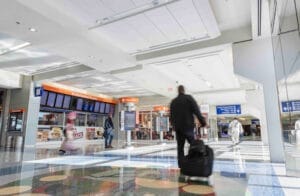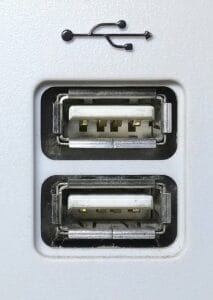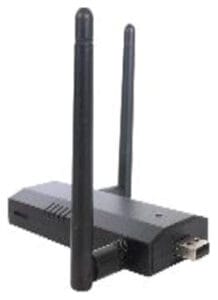Don’t use Public USB or WiFi

Don’t use Public USB or WiFi: a reader asked…
I’m getting ready to fly abroad and have a couple of questions for you. First off, is it safe to use the USB charger outlets at airports and aboard planes? I’ve heard conflicting advice. Second, is it ok to use public WiFi? Thanks as always for your advice!
I recommend against using any publicly accessible USB ports built into charging stations or power outlets. Why? Since they’re publicly accessible, it doesn’t take much work for a criminal to pop the outlet cover and install something that can compromise your smartphone or tablet. The dark web has plenty of such hardware for sale.

Unlike a typical charging cable, the USB cable that you use to charge your device has more capability than simple electrical power. You can connect your device to a computer and transfer data from the device to the computer quite easily. Now think of a smaller version of a computer that does this very simply using USB’s Mass Storage Mode. Not only can these devices read data from your device, they can also add data or malware onto your device.
It’s better to be safe and bring your own little power brick to plug into a standard electrical outlet. Those outlets can’t have any smart capabilities and only deliver electrical power. Your power brick then converts to the type of power your device needs to recharge the battery.

The answer to your second question is a little more complicated. It’s pretty easy for some criminal to open up a WiFi hotspot in a public area that looks legit, but actually hoovers up whatever data you send or receive while connected. If your device isn’t fully protected, such a WiFi hotspot could even deposit malware on your device. Unless you have 100% confidence that the hotspot you’re connecting to is legit, don’t connect. 99% sure is the same as 0% sure. While your local Starbucks or McDonalds offers WiFi, too often someone sets up another hotspot that looks almost identical to the legit one, and when you connect, you’re compromised.
If you do connect to a public WiFi, there are things you should do to protect yourself and your device. First, check the WiFi network name carefully, and recognize that “Starbucks WiFi” is different than “Starbucks Wifi”. Any change in spelling, capitalization, or even substitution of nearly identical characters (upper case i versus lower case l for example) are hard to spot.
The second thing is that anytime you do use a public WiFi network, you should also be securing your internet connection with a Virtual Private Network, or VPN. This is generally a subscription service you pay for, that encrypts and runs all your internet traffic through privacy servers. I’d avoid the free ones, you get what you pay for… I use (and recommend) NordVPN, but you can look to other online reputable sources such as PCMag.com (see https://www.pcmag.com/picks/the-best-vpn-services) to find one to use.
Be sure to activate the VPN service on your device before you connect to the public WiFi hotspot, so that every bit or byte of data you use is transmitted securely. Oh, and some public WiFi hotspots require you to register and/or log in – be very wary of doing this, especially if they ask for a password to an online account you already have. You don’t want to give away your login credentials to a criminal! Even hotel WiFi can be suspect.

Lastly, when you travel, its always best to err on the side of safety. Don’t use your computer, smartphone or tablet in such a way that someone can see your screen, or even your fingers as you type. Never leave your device unattended – if you have to visit the restroom, take your computer or device with you. Keep all your electronics with you or someplace secure (like a hotel safe). And always be aware of your surroundings, don’t immerse yourself in your device and forget to look around and judge the security of your location.
This website runs on a patronage model. If you find my answers of value, please consider supporting me by sending any dollar amount via:
or by mailing a check/cash to PosiTek.net LLC 1934 Old Gallows Road, Suite 350, Tysons Corner VA 22182. I am not a non-profit, but your support helps me to continue delivering advice and consumer technology support to the public. Thanks!








